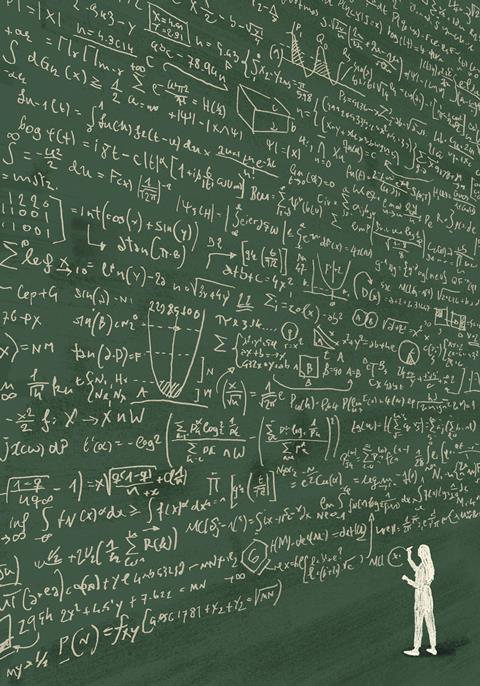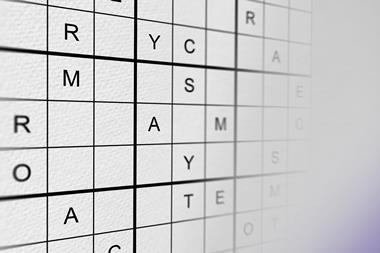Manipulating equations isn’t the same as understanding science

When, 99 years ago, Werner Heisenberg invented the first real theory of quantum mechanics, he didn’t worry much about what it meant. That’s to say, he didn’t try to articulate it as a picture of what the world was like. It was purely a mathematical formalism, an austere calculus of matrices that enabled him to make predictions about, say, the spectra of atoms, based on quantities that had already been measured.
Defending this absence of a physical picture in 1930, Heisenberg wrote that: ‘It is not surprising that our language should be incapable of describing the processes occurring within the atoms, for it was invented to describe the experiences of daily life, and these consist only of processes involving exceedingly large numbers of atoms.’
‘Fortunately,’ he went on, ‘mathematics is not subject to this limitation, and it has been possible to invent a mathematical scheme – the quantum theory – which seems entirely adequate for the treatment of atomic processes.’ Anyone who insists on a visualisation, meanwhile, would have to be content with ‘incomplete analogies’ – among which he included the rival quantum mechanics devised in 1926 by Erwin Schrödinger, which described the properties and behaviour of quantum entities in the mathematical language of waves and interference.
‘Fortunately,’ he went on, ‘mathematics is not subject to this limitation, and it has been possible to invent a mathematical scheme – the quantum theory – which seems entirely adequate for the treatment of atomic processes.’ Anyone who insists on a visualisation, meanwhile, would have to be content with ‘incomplete analogies’.
It’s still common today to hear the claim that you don’t really understand quantum mechanics until you’ve wrestled with the maths. In its extreme form, the argument is that all talk of particles in many places at once, or ‘spooky action at a distance’, are mere fluff: stories to tell students and non-scientists, all of them a bit misleading.
Language of life?
It’s true that it is particularly hard to put quantum mechanics’ notoriously counterintuitive nature into words. But the same claim is sometimes made for science more generally. As Galileo put it, nature is a book written in the language of mathematics – and if we don’t understand that language, we will be forever lost in a ‘dark labyrinth’.
I suspect this is a particularly widespread view in physics, but it crops up too in chemistry and even biology. It is a valid riposte to the antipathy to maths often evident in public life: Stephen Hawking’s claim that every equation in a popular-science book will halve its sales was simplistic but correct in spirit. Physicist Sean Carroll’s 2022 book The Biggest Ideas in the Universe: Space, Time and Motion takes an admirable stand in refusing to deny the reader the basic maths behind these concepts, trusting that they can handle it. Eugene Wigner was surely right to say we should be grateful for the ‘unreasonable effectiveness of mathematics’ in the formulation of physical laws.
Maths only truly illuminates when translated into physical terms
But there is a profound difference between using the maths and understanding the science. That, after all, was the whole point of physicist David Mermin’s flippant description of the attitude to quantum theory allegedly displayed by Heisenberg, his mentor Niels Bohr, and the rest of the ‘Copenhagen’ group: Shut up and calculate. You have a mathematical formalism that works very well for predicting observations – don’t waste time asking what it means. Mermin later admitted that this was not so much a description of the Copenhagen interpretation itself but of the typical view within the United States in the 1950s and 60s: it wasn’t that the maths itself supplied a deeper understanding, but rather that it obviated any need for that.
Hidden meaning
This too is how maths often functions in scientific discourse. We’ve all seen conference slides stuffed with equations that no one can hope to follow, included not to aid comprehension but as a display of bona fides: look, there’s serious theory behind all this. The maths only truly illuminates when translated into physical terms: this bit accounts for dissipation, this is the heat flow, this is a noise term.
In other words, genuine understanding demands something like a causal narrative. Galileo was, to put it bluntly, wrong: maths is not the language of nature, but a tool with which we are able to make quantitative predictions about some aspects of nature (while being of very little help for anticipating others – say, how the human body will respond to a drug). For the grad student (guilty confession here) maths can even be something to hide behind: if you can crank the handle and get results, you can disguise (for a while) the fact that you don’t quite grasp the underlying science.
Einstein knew this, warning of Heisenberg’s matrix mechanics that ‘[it] alone does not bring salvation.’ Even Heisenberg could not abjure a physical explanation for the weird fact (to him, unversed in matrix algebra) that his matrices did not commute. This was the origin of his ‘uncertainty principle’, which he tried to explain with reference to the uncertainty created in either position or momentum if we try to observe an electron with a gamma ray. Bohr was horrified – not because his protégé was trying to produce a visualisation, but because it was so clear Heisenberg didn’t understand the physics of microscopes.

















1 Reader's comment